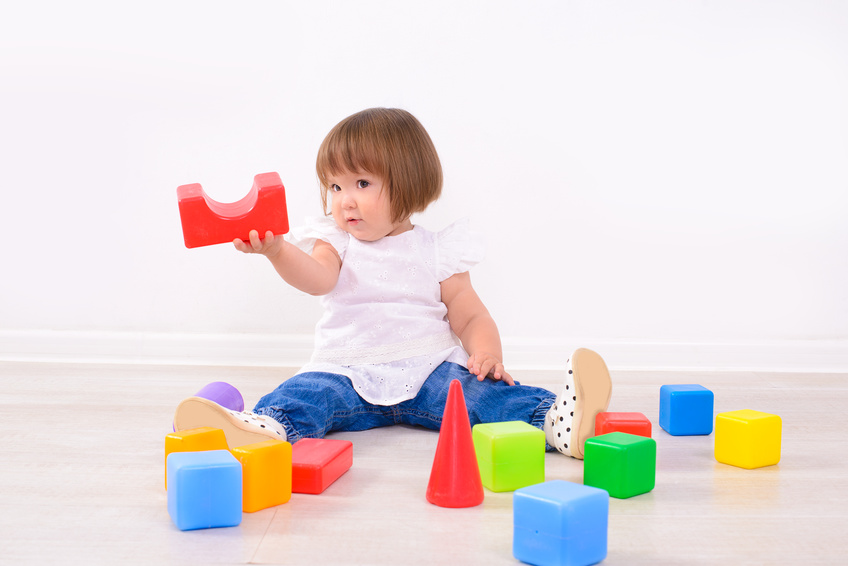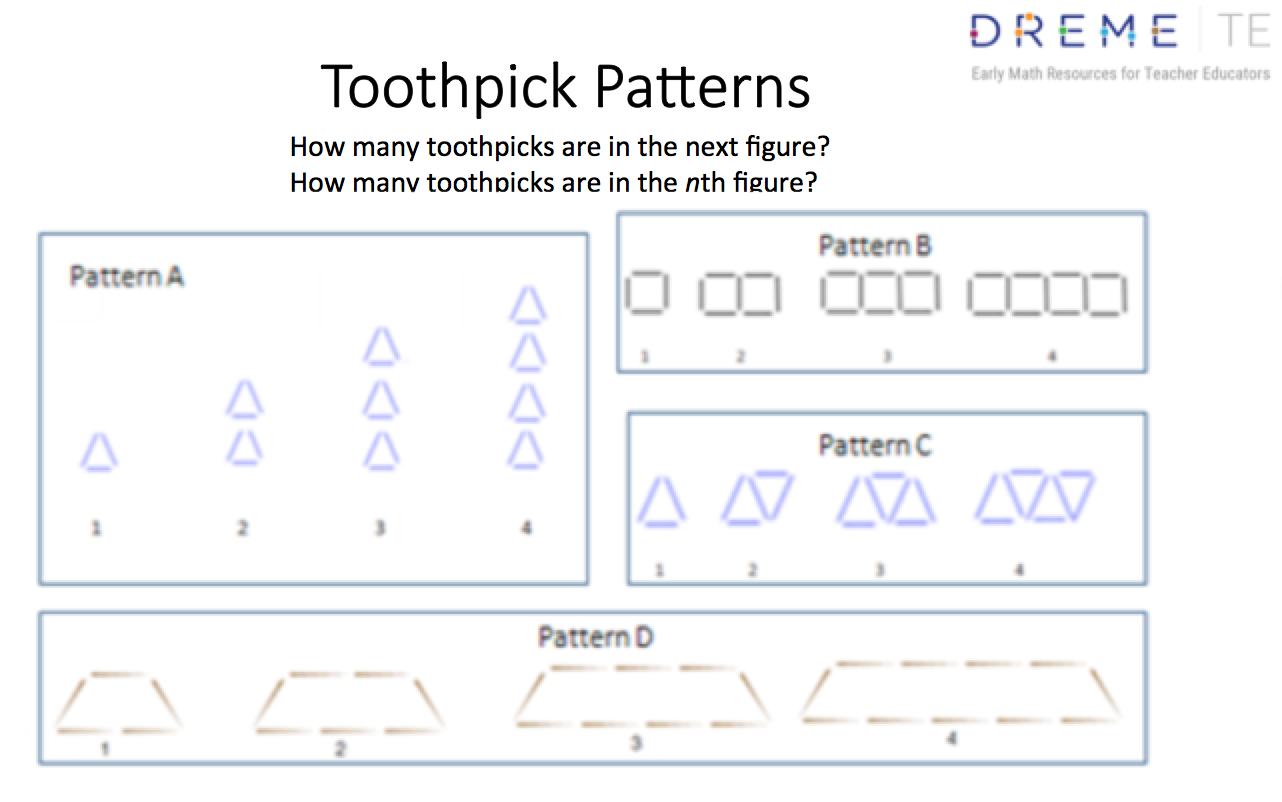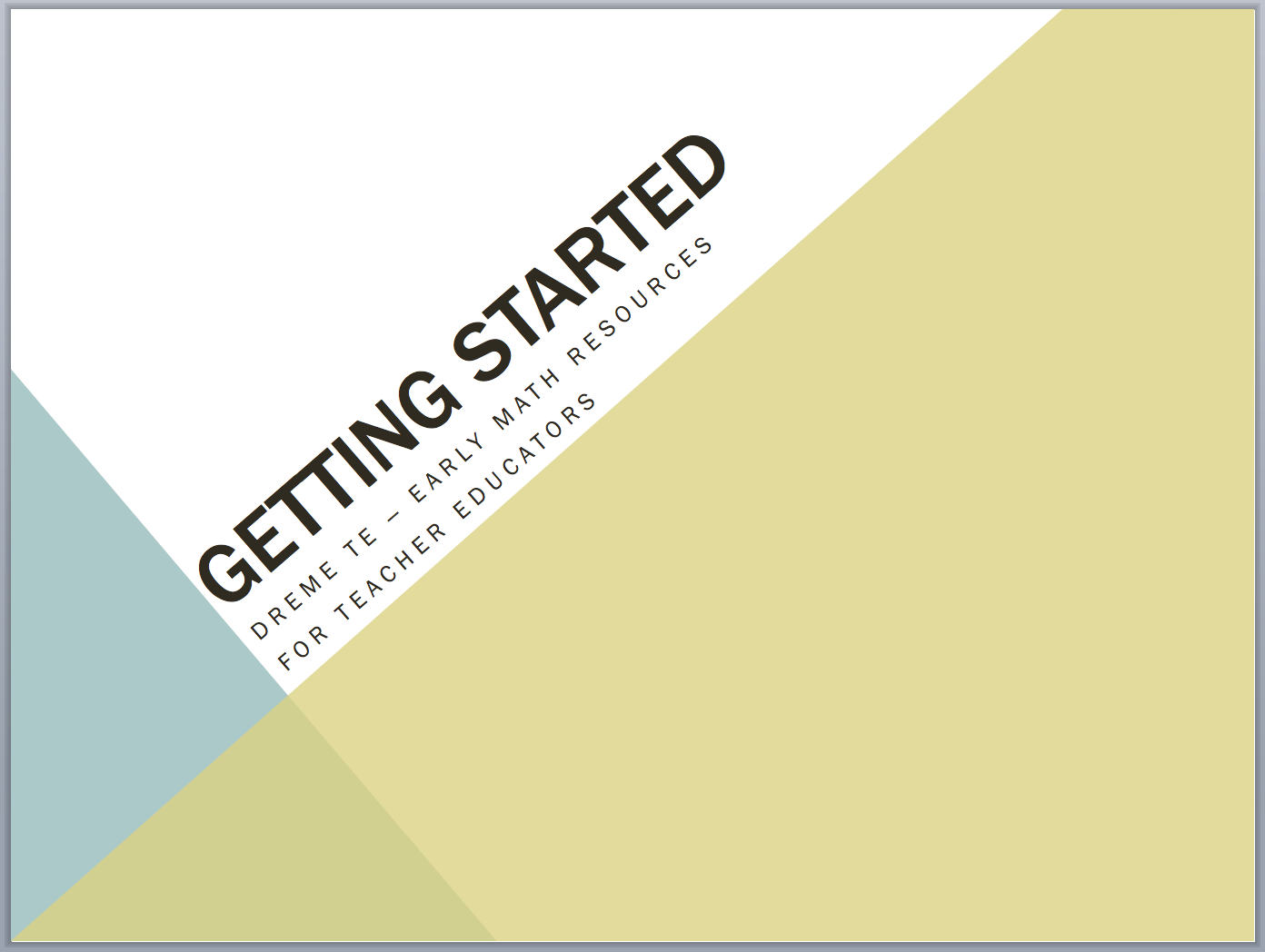This resource is designed to engage your participants in learning about shape. The activities are similar to those your participants can use in teaching children, but are more complex and demanding. The basic idea, (one often used in teacher workshops) is to help your participants gain some insight into the challenges children face in learning about shape.
Revised November 8, 2018
Activity for Teacher Educators
Frequently, when young children learn about shapes, teachers emphasize the names of shapes instead of their properties. Review What Children Know and Need to Learn about Shape and Space for details on the challenges children face when learning to classify shapes.
Shape Touch: An Activity for Your Participants
In this activity, participants will reach into a bag, touch, and describe different shapes, without looking at them. Other participants will guess the shape. Being unable to see the shapes will help participants focus on the properties, rather than the names, of shapes.
Materials Needed
To create materials for the activity, print nets on cardstock. Then cut out the nets, fold them into solid figures, and tape them together, as shown in Figure 3. An alternative is to use physical manipulatives, like wooden or foam solids.
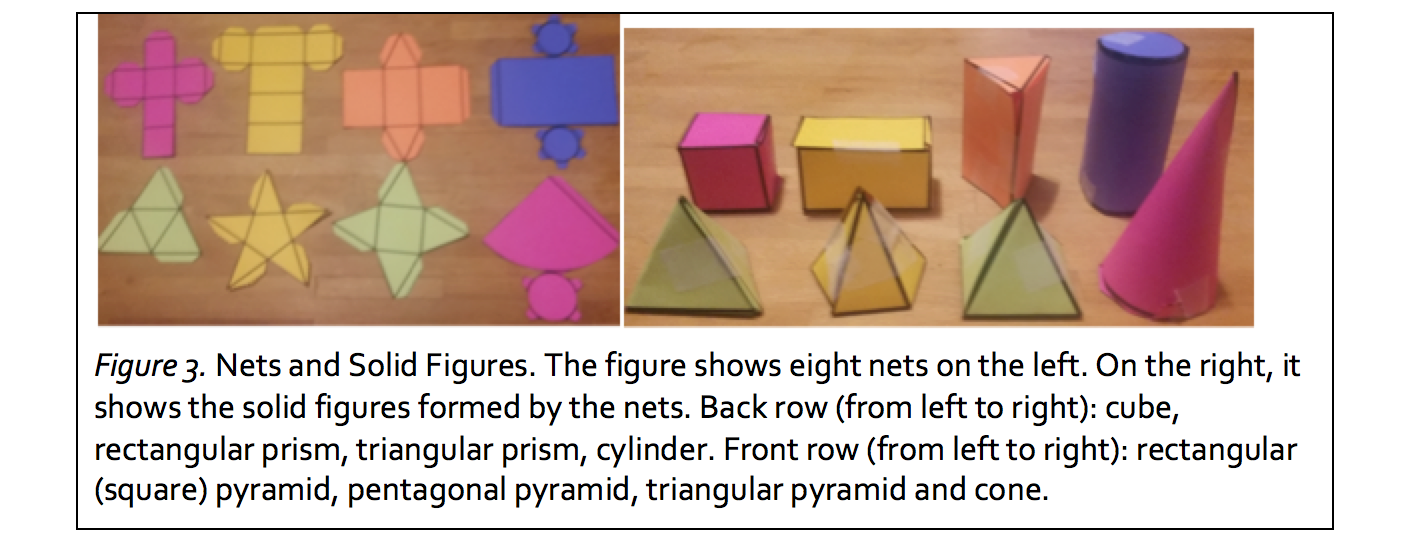
Try for a good mix of solids. For example, Figure 3 shows eight solids. These include:
- prisms: cube, rectangular prism, triangular prism
- pyramids: triangular pyramid, pentagonal pyramid, rectangular (square) pyramid
- other solids: cone, cylinder
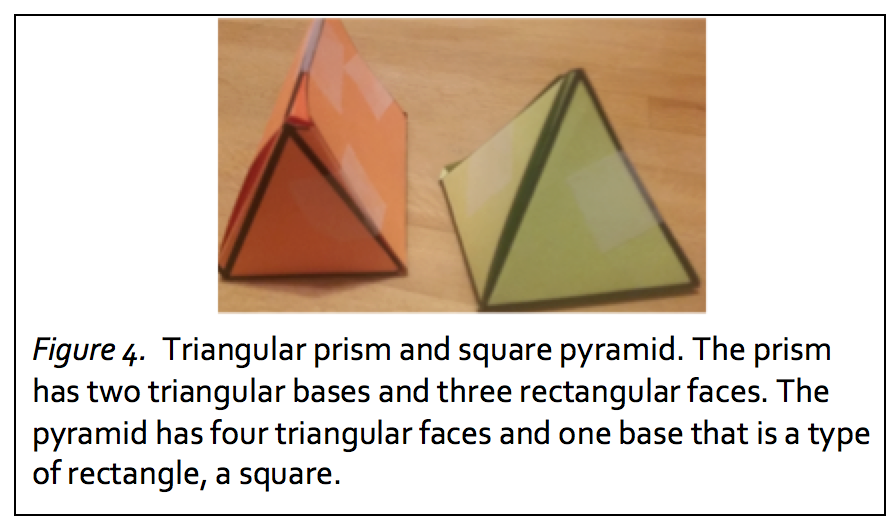 Separate participants into small groups of three or four and gave each group an opaque bag containing at least six of the solids. We deliberately chose solids for each bag that would pose challenges. For example:
Separate participants into small groups of three or four and gave each group an opaque bag containing at least six of the solids. We deliberately chose solids for each bag that would pose challenges. For example:
- A triangular prism and a rectangular pyramid both have faces that are triangles and rectangles, as shown in Figure 4.
- A cone and a cylinder each have at least one circular base.
- The cone and the pyramids have an apex point (vertex).
- A pentagonal pyramid is not a common solid, so students need to pay attention when determining the shape of the base and the number of faces.
Activity
Have participants in each group take turns. One participant will be the describer and the others will be the listeners. The describer's job is to reach into a bag without looking, feel a solid figure, and describe its attributes in words. Given the verbal description, each listener's job is to guess the identity of the solid. The listeners do not have to name the solid (although doing so is acceptable) but can instead draw it or describe it using non-math words (e.g., a "box shape" instead of a "rectangular prism"). After the listeners guess the identity of the solid, the describer will pull it out of the bag to see if the determination is correct.
Walk around and talk with the groups during the activity to answer questions and encourage participants to focus on individual bases, faces and points, in order to describe the solids in terms of their defining properties rather than just their names Try to keep participants focused on the exploration of shapes and what they are learning, not on how well they can name three-dimensional solids, especially since some, like the pentagonal pyramid, are not common shapes.
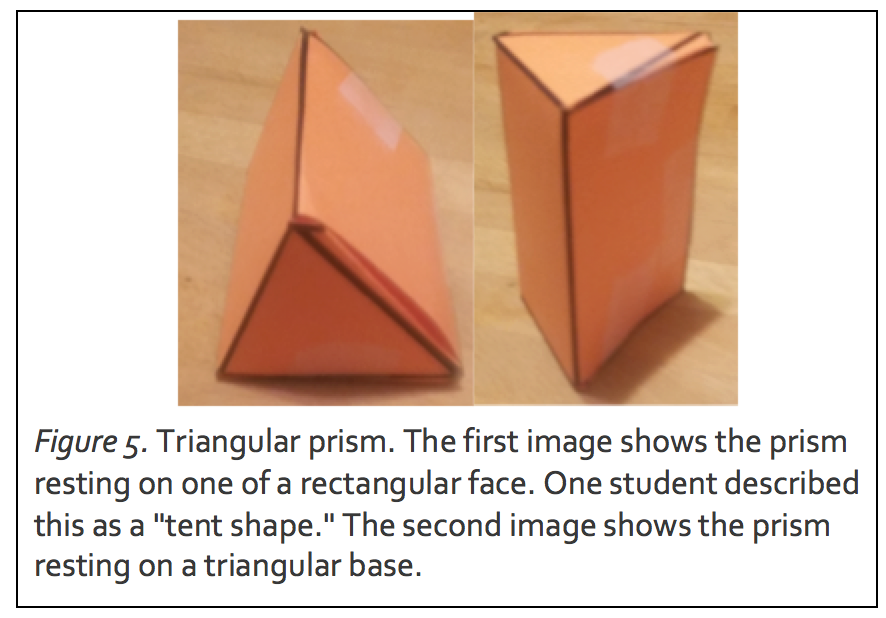 Some of our participants seemed more concerned about what they did not already know than what they were actively learning. The TE needs to be alert to this possibility. For example, in one group, the describer was holding a triangular prism. The describer wrote, “I initially told my group that the base was rectangular and the top was triangular. Everyone knew what shape it was but we could not think of the formal name for it.” Nevertheless, the listeners did identify the correct solid. One listener guessed that it was a “tent shape” and the other drew a triangular prism resting on one of its rectangular faces. The first image in Figure 5 shows how they envisioned the shape.
Some of our participants seemed more concerned about what they did not already know than what they were actively learning. The TE needs to be alert to this possibility. For example, in one group, the describer was holding a triangular prism. The describer wrote, “I initially told my group that the base was rectangular and the top was triangular. Everyone knew what shape it was but we could not think of the formal name for it.” Nevertheless, the listeners did identify the correct solid. One listener guessed that it was a “tent shape” and the other drew a triangular prism resting on one of its rectangular faces. The first image in Figure 5 shows how they envisioned the shape.
Despite the correct identification, members of the group were disappointed and did not feel successful. They were surprised when the course assistant rotated the prism to look like the second image in Figure 5, explaining that the bases of a triangular prism are triangles, not rectangles. One listener focused on what had been learned, writing that “we learned that bases of prisms must be parallel.” However, the other listener wrote, “My group specifically called one of the shapes 'tent shape', and even as I write this I still cannot remember the [proper] name of the shape!” The instructors again emphasized that the participants had successfully described and guessed the shape, and thus achieved the goal, which is not to learn the names of solids but rather to explore and learn about their attributes.
To see an example of how this activity played out in a university mathematical development course, see Teaching about Shape: in Action.
Reflections and Group Share
Ask participants to reflect on their individual experiences in writing. You can have them to write freely or give them questions, such as, “How was it different to describe a shape without being able to see it? What strategies did you use to figure out the shape?” After participants have had a chance to reflect, bring the whole group back together to share.
Conclusion
This activity is intended to give participants a sense of the challenges young children may experience when classifying shapes. It is modeled after a task used with young children in the Big Math for Little Kids program (Ginsburg, Greenes, & Balfanz, 2003). The children's activity substitutes two-dimensional shapes, like pattern blocks, for the solids used in this activity. The activity provides a literal “hands-on” way for children to explore shapes by using senses other than vision. It gives children the opportunity to discuss the attributes of each shape with their peers and learn something new about the shapes themselves.

